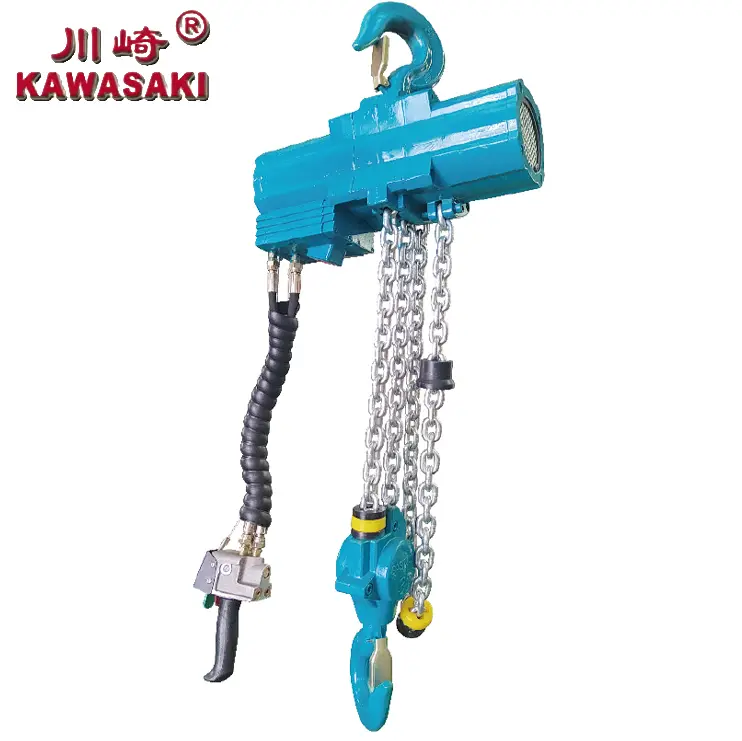When you walk past a busy construction site or step into a warehouse where steel beams are stacked like Lego blocks, you’ll notice one thing—chains are everywhere. Lifting chains are the quiet workhorses of rigging projects. They carry the weight, absorb the shock, and in many cases, decide whether the load lands safely or causes a costly mistake. But a simple question often comes up, especially for buyers and engineers: what weight are lifting chains, and how do you know which ones to choose?
This guide takes a closer look at chain weights, real-world applications, and how Apollo (Kawasaki brand) products fit into the picture.
What makes lifting chains essential in rigging projects
Strength and load capacity for heavy lifting
Chains are the backbone of rigging because of their raw strength. A G80 chain, for example, can handle breaking forces of around 800 MPa. In practical terms, that means one chain link can carry several tons without stretching. On a construction site where 10-ton concrete slabs are moved daily, that difference is not just theoretical—it’s life-saving.
Durability and resistance to wear
Unlike textile slings or ropes that fray quickly when exposed to sharp edges, chains last. Steel alloys, especially those used in Apollo’s G80 and G100 chains, resist abrasion and can survive harsh weather. A warehouse in Malaysia once reported that their chains had been in continuous service for five years before they even thought of replacing them. That kind of durability translates directly into lower long-term costs.
Compliance with safety standards and certifications
In rigging, guesswork is dangerous. Chains come with markings and certificates. Apollo’s Kawasaki lifting chains have passed ISO9001 and CE/GS certifications, which is why their products are trusted from Singapore ports to factories in South Korea. The paperwork may not be glamorous, but it’s what keeps insurance inspectors and safety officers happy.
How much do different types of lifting chains weigh
Weight range of G80 lifting chains
G80 chains are the most common in construction. A 10 mm short-link G80 chain weighs about 2.2 kg per meter. Scale that up, and a 30-meter coil tips the scale at nearly 70 kg. You can imagine two men struggling to drag it across a yard.
Weight range of G100 lifting chains
G100 chains are lighter for the same strength. A 10 mm G100 chain might weigh closer to 2 kg per meter, but its working load limit is higher. That weight-to-strength ratio makes it popular in offshore lifting projects where every kilogram saved reduces fuel consumption for cranes and vessels.
Weight range of stainless steel lifting chains
Stainless chains are not as strong as alloy steel, but they shine in corrosive environments. A 10 mm stainless chain weighs about 2.3 kg per meter. Yes, slightly heavier than G100, but when you’re working near seawater, avoiding rust is worth the trade-off.
What factors influence the weight of lifting chains
Material composition and grade
Not all steel is the same. High-grade alloy steel (like T80 and T100 used by Apollo) carries more weight with less material. Cheaper chains from unverified sources may look identical, but they are heavier and weaker because of lower carbon or improper heat treatment.
Chain link design and dimensions
Short-link chains weigh more per meter but offer higher strength and less stretch. Long-link chains are lighter but not suitable for heavy vertical lifting. The design choice directly impacts the weight per meter.
Manufacturing process and treatment
Heat treatment, quenching, and surface finishing all affect final weight. Chains that are galvanized or nickel-plated add a small percentage of extra weight. It sounds minor, but in a project where hundreds of meters are used, those kilos add up.
Which lifting chain weights are most commonly used in the field
Standard chain sizes for construction sites
Construction projects usually rely on 8 mm to 16 mm G80 chains. These strike a balance between manageable weight and high load capacity. Workers prefer them because they are heavy enough to trust, but still light enough to sling over a beam by hand.
Chain specifications for warehouse and logistics
In warehouses, chains used for pallet trucks or small hoists are lighter, often 6 mm to 10 mm. A 6 mm chain weighs about 0.8 kg per meter. Small, yes—but strong enough to move stacks of steel plates without snapping.
Preferred options for offshore and marine projects
Marine operators lean toward stainless or G100 chains in the 10 mm to 13 mm range. Offshore cranes might lift containers all day, so saving even 10% in chain weight means significant fuel savings and faster deployment.
How do Apollo lifting chains support safety and performance
High-quality alloy steel and precision forging
Apollo’s Kawasaki lifting chains are built from high-intensity alloy steel, tested to 800 MPa breaking strength. Each link is forged and heat-treated for consistency, which cuts down the risk of sudden breaks.

ISO9001 and CE certified production standards
Every batch goes through strict inspection: load tests, assembly checks, and even surface treatment evaluation. Apollo has built its name on quality control, which explains why they’ve had long-term partners in markets like Japan and Thailand.
ODM and OEM customization for global clients
For buyers with specific requirements—say, a German distributor asking for custom packaging or a Singapore client needing nickel-plated finish—Apollo delivers. Their OEM/ODM services range from chain grades to packaging designs. That flexibility makes them more than just a supplier; they become part of the client’s supply chain strategy.
What Apollo lifting chain products are recommended for rigging
Kawasaki lifting G80 chain with 800MPa breaking strength
This is the workhorse for construction and industrial projects. With a 4:1 safety factor, it’s trusted worldwide.
Short link chain and American standard chain for versatility
These are widely used for general rigging, from shipyards to heavy equipment yards. Apollo offers multiple standards to match regional preferences.
Binding chain and accessories for complete rigging solutions
It’s not just chains—Apollo also supplies hooks, slings, and clamps, meaning clients can get a full rigging package under one roof. That saves time and reduces compatibility issues.
Why choose Apollo as your lifting chain supplier
Decades of expertise and strong R&D background
Since 1986, Apollo has been in the lifting industry. Their R&D center in Osaka, Japan, continues to refine product lines. Few competitors can claim that longevity and technical base.
Global sales network and reliable after-sales service
From Southeast Asia to Europe, Apollo has agents and distributors ready to support customers. They even provide video guides for product use and offer accessories service post-purchase.
Consistent quality with monthly large-scale production
With a supply capacity of 5,000 chain hoists per month, Apollo is not a small workshop. For clients who need bulk orders, capacity matters as much as quality.
Conclusion
So, what weight are lifting chains commonly used in rigging projects? The answer depends on the grade, environment, and industry—but most fall between 6 mm to 16 mm, weighing less than 3 kg per meter. Beyond numbers, the choice comes down to trust. Apollo’s Kawasaki lifting chains offer that trust with decades of experience, certified production, and flexible customization.
FAQs
Q1: How do I know which lifting chain weight to order for my project?
Check the working load limit (WLL) and compare it with the heaviest load you expect to lift. Always allow a safety factor of at least 4:1, as Apollo does with its G80 chains.
Q2: Can Apollo supply customized lifting chains for unique projects?
Yes, Apollo offers OEM and ODM services. Clients can request custom grades, finishes like nickel plating, or even branded packaging to fit their market.
Q3: Are lighter G100 chains always better than G80 chains?
Not always. G100 offers higher strength-to-weight ratio, but G80 is more widely available and cost-effective. The choice depends on your budget and application environment.

